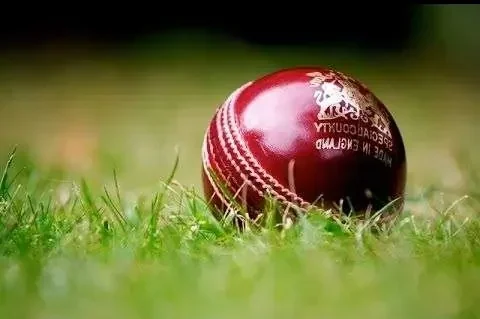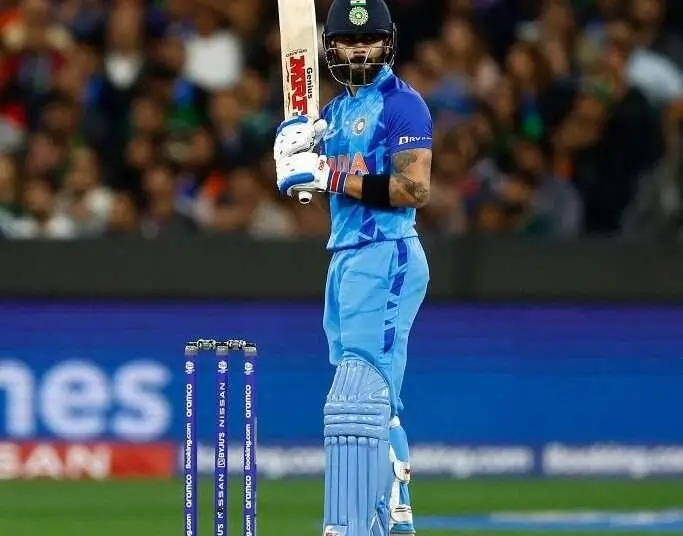What is Cricket Powerplay?
Cricket Powerplay is a strategic phase in limited-overs cricket, specifically used in One-Day Internationals (ODIs) and Twenty20 (T20) matches. It is a crucial aspect of modern-day cricket that plays a pivotal role in determining the course of a game by setting fielding restrictions on the bowling side. These restrictions are designed to create a balance between bat and ball, allowing for more aggressive play during certain overs while keeping the game exciting for both players and spectators.
In simple terms, a Powerplay in cricket refers to a set period where the fielding team is limited in the number of players it can place outside the 30-yard circle, thus creating more scoring opportunities for the batting side. Understanding how Powerplays work and when they occur can offer insight into how teams approach their innings and craft their strategies.
How Does a Powerplay Work?
In both ODIs and T20 cricket, Powerplays are introduced to encourage dynamic play. They are divided into distinct phases where fielding restrictions apply, limiting the number of fielders allowed outside the 30-yard circle. The rules, however, differ slightly between the formats of the game.
Powerplay in One-Day Internationals (ODIs)
In an ODI match, which consists of 50 overs per side, the Powerplay is divided into three distinct phases:
- First Powerplay (Overs 1–10):
- In the first 10 overs of the innings, only two fielders are allowed outside the 30-yard circle.
- This phase is considered the most crucial for the batting team to take advantage of the fielding restrictions. With fewer fielders patrolling the boundary, batsmen often try to hit more boundaries and score at a higher rate during this phase.
- Second Powerplay (Overs 11–40):
- In this phase, up to four fielders can be placed outside the 30-yard circle.
- While the restrictions ease slightly, bowlers still need to be careful with their line and length because the field is still relatively restricted compared to non-Powerplay overs.
- Final Powerplay (Overs 41–50):
- During the last 10 overs of the innings, up to five fielders can be outside the 30-yard circle.
- This phase is typically dominated by aggressive hitting from the batting side as they look to maximize their run total in the final overs, making use of the fielders’ positioning to hit boundaries or clear the ropes for sixes.
Powerplay in Twenty20 (T20) Cricket
In the shorter T20 format, where each side faces 20 overs, the Powerplay lasts for the first six overs of the innings:
- First Powerplay (Overs 1–6):
- Only two fielders are allowed outside the 30-yard circle, just like in the ODI Powerplay.
- The first six overs in T20 cricket are often when the batting team aims to build momentum, scoring quickly with aggressive shots as fielding restrictions give more chances to clear the infield for boundaries or quick singles.
- Post-Powerplay (Overs 7–20):
- After the Powerplay, up to five fielders are allowed outside the 30-yard circle for the remaining 14 overs of the innings.
- Teams usually adopt a more cautious approach in this phase, balancing aggression with risk as they navigate through the middle overs.
Why Is the Powerplay Important?
Powerplays are crucial because they influence tactics, strategy, and momentum in limited-overs cricket. For both the batting and fielding teams, the Powerplay presents unique opportunities and challenges:
For the Batting Team
- Maximizing Runs: During the Powerplay, batters look to score heavily, especially with fielders restricted inside the circle. The limited number of outfielders allows them to hit more boundaries, particularly in the first Powerplay.
- Aggressive Start: A good start in the Powerplay can set the tone for the rest of the innings. Teams often send their most aggressive openers or power hitters to capitalize on the early overs.
- Building Momentum: A strong performance in the Powerplay can help a team build momentum for the rest of the innings. The aim is often to set a solid foundation for a higher run rate later in the game.
For the Fielding Team
- Containing Runs: The primary objective for the fielding side is to limit the scoring opportunities during the Powerplay. Bowlers tend to focus on accurate line and length to prevent easy boundaries.
- Taking Early Wickets: For the bowling team, the Powerplay offers an opportunity to take early wickets, especially since the batting side might take risks to score quickly. Early wickets can shift the balance of the game in the bowling team’s favor.
- Strategic Field Placements: Teams will adjust field placements during the Powerplay to minimize damage while adhering to the restrictions. This might involve positioning fielders closer to the boundaries where the batters are likely to target.
Types of Powerplays
Powerplays are generally classified into two categories:
1. Mandatory Powerplay
The mandatory Powerplay is the first Powerplay at the start of the innings, which is automatic and required by the game’s rules. It is the initial phase (first 10 overs in ODIs and first 6 overs in T20s) where the fielding restrictions apply.
2. Batting and Bowling Powerplay (Old Rule)
Historically, ODIs used to have additional Powerplays that were split between the batting and bowling sides. For instance, teams could choose a Batting Powerplay, where fielding restrictions would favor the batting side, or a Bowling Powerplay, allowing bowlers to have more control over the field placements. However, in 2015, this rule was removed to simplify the format and make the game more consistent.
Powerplay Strategy: The Impact on Game Dynamics
Powerplays have a profound impact on the overall strategy and dynamics of a limited-overs match. Whether a team excels or falters in this phase can significantly influence the result of the game.
Aggressive Opening
Teams with a strong batting lineup aim to use the Powerplay to score aggressively, setting a quick tempo for the game. Openers often take calculated risks to exploit the lack of fielders in the outfield, aiming to create a solid base for the middle and lower-order batters.
Fielding Side’s Challenge
For the bowling team, the Powerplay is all about balancing attack and defense. They aim to keep the run rate under control while also hunting for early breakthroughs. Captains often employ their best bowlers during the Powerplay overs to take early wickets and shift the pressure onto the batting team.

Impact on the Game
The introduction of powerplay overs has significantly transformed the dynamics of limited-overs cricket. It has added a sense of urgency and excitement to the early stages of an inning, enticing fans with the possibility of explosive batting displays. The powerplay overs often witness daring stroke play, innovative shots, and calculated risks taken by batters aiming to maximize their team’s total.
Moreover, the powerplay has increased the tactical aspect of the game, encouraging captains and coaches to strategize and adapt their game plans accordingly. It has given rise to specialist powerplay bowlers and batters who exploit the fielding restrictions to their advantage. The powerplay overs have become a crucial phase where the game’s momentum can shift dramatically, captivating spectators and enhancing the viewing experience.
Conclusion
The cricket powerplay has become an integral part of modern limited-overs cricket, revolutionizing the sport by introducing a period of strategic excitement. It allows batters to showcase their attacking prowess while challenging the bowling team to devise innovative tactics. The powerplay overs have undoubtedly added a new dimension to the game, captivating fans worldwide and ensuring cricket remains an enthralling spectacle for years.
FAQs
Q1: What is cricket powerplay?
A: Cricket powerplay is a designated period during a limited-overs match when fielding restrictions are imposed on the bowling team, allowing the batting team to maximize their scoring potential.
Q2: How long does the powerplay last?
A: The powerplay typically consists of two phases. The mandatory powerplay lasts for the first ten overs in Day Internationals (ODIs) and the first six overs in Twenty20 Internationals (T20Is). Then, the remaining powerplay overs are chosen by the batting team.
Q3: What are the fielding restrictions during the powerplay?
A: Only two fielders are allowed outside the inner circle during the mandatory powerplay, usually the 30-yard process. In the remaining powerplay overs, a maximum of four fielders can be positioned outside the inner circle.
Q4: Can the batting team choose when to take their powerplay overs?
A: After the mandatory powerplay, the batting team can decide when to take their remaining powerplay overs based on the game situation and their strategic preferences.
Q5: What is the significance of the powerplay?
A: The powerplay allows the batting team to score quick runs and build a solid foundation for their innings. However, it also puts the bowling team under pressure, requiring them to strategize and control the run rate.







